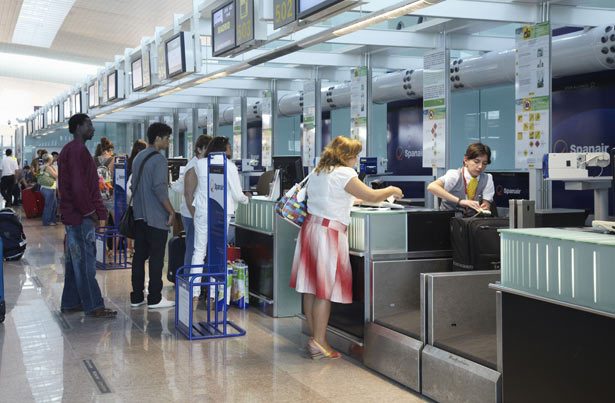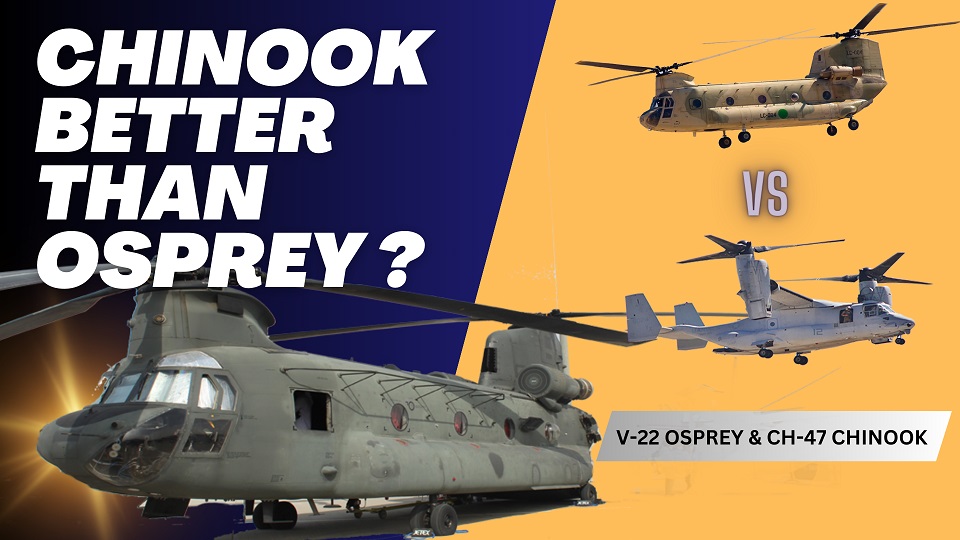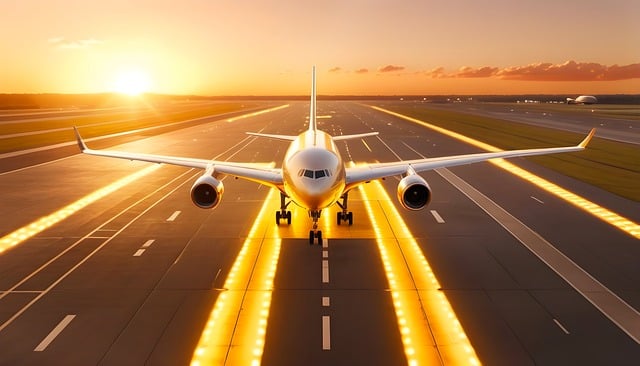Aviation
10 Things You Should Never Pack in Your Checked Bag

The Transportation Security Administration (TSA) maintains a complex system of rules for transporting both carry-on items and checked bags on flights. Some objects are prohibited on planes at all times, while others may be checked and not carried, or vice versa. Confused? “When in doubt, leave it out,” says the TSA.
If only it were that simple. Packing the wrong thing in your checked bag has the potential to ruin your trip—especially if that bag gets lost, broken, or roughed up by baggage handlers. A simple rule of thumb: Pack anything of value or importance in your carry-on bag, in case your luggage gets lost by the airline. But there’s more to keep in mind. Below, in no particular order, are 10 things that you should always leave out of your checked bag.
Jewelry and Valuables
Of course, it’s not probable that your checked bag will be lost by an airline. According to a report by SITA, a company that gathers statistics for airlines, .012 percent of passengers’ bags were reported damaged, lost, or delayed in 2010. But if you happen to fall in that .012 percent and your checked bag contains an antique watch, a family photo album, or your wedding ring, you’re in trouble.
Most carriers require passengers to submit claims forms when bags are lost. Your airline will then tally the depreciated value of the contents of your missing suitcase—if your claim is accepted, that is. Airlines will pay no more than $3,300 per passenger for bags lost on domestic flights. All in all, it’s unlikely that you’ll receive compensation equal to the full value of your lost possessions.
We recommend leaving jewelry and other valuables at home when traveling, but if you must bring these items on the road, be sure to store them safely in your carry-on bag.
Identification, Passports, Boarding Passes, and Essential Documents
All necessary documents, whether they’re work or insurance papers or other sensitive information, should be kept with you in your carry-on bag. But there is another solution—back it up. If you plan to put papers of importance in checked luggage, keep copies (either hard photocopies or copies on a flash drive) on your person.
Bottom line: Any important documents you’ve packed in your checked luggage should be photocopies, not originals. And any documents that include sensitive or private information should be kept out of your checked luggage altogether.
Cash and Credit Cards
All checked bags are screened electronically, but select checked bags are opened by TSA agents and screened by hand. When packing a checked bag, be aware that a security agent—a stranger, essentially—may be rummaging through your things at some point. There have been reports of TSA workers stealing electronics, money, and other valuables from passengers’ bags; as expected, such occurrences are rare. But as a precaution, your cash, checkbook, and credit cards should be kept with you in your carry-on bag.
There’s always a chance that your suitcase could get damaged en route, too. If a busted zipper befalls your bag, any packed cash will be easy pickins for thieves.
Laptop and Electronics
Take it from the TSA. A representative from the agency offered this advice for flyers: “Electronics … should be packed in carry-on luggage because they are typically fragile, expensive, and more prone to breaking if transported in checked baggage.” The threat to your electronics is two-fold: you need to protect your devices from burglary (see above) as well as breakage. No matter how many beach towels you’ve wrapped around your laptop, it’s still at the mercy of baggage handlers and bumpy flights while in transit.
Lighters, Matches, and Flammable Items
The TSA has a handy checklist of prohibited items on its website. Some of the objects on the list are as obscure as they are obvious: gun powder, hand grenades, tear gas, vehicle airbags (packed to protect a checked laptop, perhaps?). But items of note include lighters, matches, and flammable objects, which anyone going on a camping trip (or travelers who smoke) might need to pack.
Lighters without fuel may be packed in checked luggage. However, lighters with fuel may only be packed in checked luggage if they’re in a Department of Transportation-approved case; an example of this is the Zippo Air Case. Matches are prohibited in checked baggage, and flammable items, such as paint or liquid fuel, should be avoided as well.
All of Your Clothes
If your luggage disappears into the mysterious black hole of missing checked bags, you’ll thank your former self for putting a clean pair of underwear and some socks aside in your carry-on bag. An entire outfit—enough to get you through a day or two at your destination in case your airline loses your suitcase—is even better. Other daily essentials, like a toothbrush, a comb, key toiletries (though liquids must be in containers no larger than 3.4 ounces), and whatever else you might need if your bag gets lost should be placed in your carry-on as well.
Medications
There’s a theme here. If you can’t live comfortably without it, don’t pack it in your checked bag. That old cliche, “better safe than sorry,” should be lingering in the back of your mind when you’re organizing your luggage. Accordingly, prescription drugs are best kept on your person.
Passengers are permitted to bring liquid medications onto planes, even if they exceed the 3.4-ounce limit for carry-on liquids. But you’ll need to officially declare your oversized liquid medications when going through the checkpoint. Tell a security officer stationed at the checkpoint that you’re carrying liquid medications, and hand them over for inspection. It helps to have a doctor’s note or a medical ID card, but it’s not required. The TSA also suggests that travelers label medications to facilitate the screening process.
Breakable Items
Don’t blame it all on the baggage handlers. Sure, they’ve been known to bust up a prized possession or two. But baggage handlers, under pressure to load hundreds of bags onto a plane in a short amount of time, are just trying to get your flight off the runway—with your luggage onboard. Sometimes this necessitates a good throwing arm. (Read more in Confessions of an Airline Baggage Thrower.)
Fragile items should always be packed in your carry-on bag. If you must bring home that bottle of red you picked up in Bourdeaux, use a product like the VinniBag, which will protect the contents of your bag in case the bottle breaks.
Film
If you ducked the digital trend and snap travel photos on a camera that takes film, steer clear of storing undeveloped rolls in your checked bag. The X-ray machines that the TSA uses to screen checked bags can damage film. Instead, put your film in your carry-on bag and ask the TSA agent at the security checkpoint to inspect your film by hand. The TSA suggests that travelers pack film in clear canisters or clear plastic bags to expedite the inspection process, but this isn’t required.
Food and Drink
According to the TSA, flyers should avoid putting food and beverages in checked bags. Passengers aren’t prohibited from storing chow in checked bags, but it’s a wise suggestion nevertheless. Bottled drinks are likely to explode or crack in transit, thus ruining the cashmere sweater tucked in your bag. And if your flight is delayed or your luggage gets lost for a while, your packed food might spoil.
Courtesy : Airfarewatchdog

Aircraft comparison
Osprey is faster than Chinook helicopter ?

In this article, we’ll delve into two distinct military aircraft that have played essential roles in United Air Force defense. Both aircraft have unique characteristics in terms of usage and flying capabilities. One is capable of vertical takeoff and flies like an aircraft, while the other is a helicopter with two tandem rotors. Let’s explore each of these aircraft in detail.
The speed of helicopters can vary depending on several factors such as their design, engine power, payload, and mission requirements. Generally speaking, the Osprey (specifically referring to the V-22 Osprey) is faster than the Chinook helicopter.
The V-22 Osprey is a tiltrotor aircraft, meaning it can take off and land vertically like a helicopter but also tilt its rotors forward to fly like an airplane. This design allows the Osprey to achieve higher speeds compared to conventional helicopters. The cruising speed of the V-22 Osprey is around 241 knots (277 mph or 446 km/h).
On the other hand, the Chinook helicopter, such as the Boeing CH-47 Chinook, has a cruising speed typically around 170 knots (196 mph or 315 km/h). While the Chinook is a highly capable and versatile helicopter known for its heavy-lift capabilities and reliability, it generally operates at lower speeds compared to the Osprey.
The comparison between an Osprey and a Chinook helicopter involves contrasting two distinct aircraft with different designs, capabilities, and purposes:
MV-22 Osprey details:
The Osprey has garnered significant controversy since its inaugural flight, primarily stemming from issues associated with its tiltrotor design. These challenges have led to several incidents and crashes, resulting in the tragic loss of pilots and crew members and prompting multiple groundings of the aircraft.
However, efforts are underway to address these technical issues swiftly, with plans to rectify the problems and resume flights promptly. Despite these setbacks, the Osprey remains crucial in operational contexts, offering enhanced capabilities for transporting both cargo and crew members, underscoring its pivotal role in various missions.
Except for the United States and Japan, no other country has been granted authorization to utilize the Osprey aircraft. Its unique design and specialized nature, being built in the United States, likely necessitate governmental permission for export to other nations.
The Osprey stands out for its groundbreaking design and innovation, featuring the ability to transition from vertical to horizontal rotor positions while also generating thrust like a conventional aircraft.
- MV-22 Osprey:
- The MV-22 Osprey is a tiltrotor aircraft, meaning it can take off and land like a helicopter but fly like a fixed-wing aircraft once airborne.
- It’s primarily used for vertical takeoff and landing (VTOL), troop transport, cargo transport, and aerial refueling.
- The Osprey has a unique ability to combine the vertical lift capability of a helicopter with the speed and range of a turboprop aircraft.
- It can carry up to 24 troops or 20,000 pounds of internal cargo and has a top speed of around 315 miles per hour (507 km/h).
- The Osprey is utilized by the U.S. Marine Corps, U.S. Air Force Special Operations Command, and other military forces around the world.
Boeing CH-47 Chinook:
The Chinook helicopter stands as a testament to unparalleled engineering and innovation, making it one of the most distinctive aircraft ever constructed. Since its inception, no other nation has attempted to replicate its singular design, owing to the extraordinary precision and aerospace technology required for its construction. This helicopter, revered as an engineering marvel, has become a staple in major battlegrounds, renowned for its exceptional capacity to transport troops and cargo to any destination. Remarkably versatile, it operates seamlessly on both land and water surfaces, boasting an integrated floating system that enhances its capabilities even further.
Selected countries have been granted permission to utilize the Chinook helicopter, showcasing its global appeal and strategic importance. Furthermore, ongoing development efforts are underway to enhance the speed and carrying capacity of the next version of this iconic aircraft. Renowned for its exceptional safety record, the Chinook stands as one of the safest helicopters in operation today, with a remarkably low incidence of crashes. Its versatility is unmatched, making it an invaluable asset for operations in diverse terrains and environments.
- Boeing CH-47 Chinook:
- The Chinook is a tandem rotor helicopter, known for its distinctive twin-rotor design.
- It’s a heavy-lift helicopter primarily used for troop transportation, artillery emplacement, battlefield resupply, and various other missions.
- The Chinook has a rear loading ramp for cargo and troops, making it well-suited for quick loading and unloading.
- It can carry up to 55 troops or 24,000 pounds of cargo internally and has a top speed of around 170 miles per hour (274 km/h).
- The Chinook is widely used by the U.S. Army and various other military forces worldwide, including the UK, Canada, and others.
Comparison:
- Design: The Osprey is a tiltrotor aircraft, while the Chinook is a tandem-rotor helicopter.
- Speed and Range: The Osprey has a higher top speed and longer range compared to the Chinook due to its fixed-wing aircraft capabilities.
- Payload Capacity: The Chinook generally has a higher payload capacity for both troops and cargo compared to the Osprey.
- Versatility: While both aircraft are versatile in their own right, Osprey’s ability to take off and land vertically as well as fly at high speeds over long distances gives it a unique advantage in certain scenarios. However, the Chinook’s ability to carry larger payloads makes it better suited for heavy lift operations.
- Cost and Maintenance: Maintenance and operating costs may vary between the two aircraft, with tiltrotor technology typically being more complex than traditional helicopter designs.
Most Popular .
These are the Top 10 best US airlines of 2024

In an era where air travel plays an integral role in connecting people and places, the quality of airline service can significantly impact travelers’ experiences.
As we navigate the ever-changing landscape of aviation, insights into the performance and reliability of different carriers become invaluable. Enter WalletHub’s comprehensive analysis, offering a glimpse into the 10 best US airlines of 2024. Join us as we embark on a journey through the clouds, exploring the top performers.
Best airlines of 2024
- Alaska Airlines (68.07 out of 100): Anchoring the list is Alaska Airlines, celebrated for its consistency and customer satisfaction. With a score of 68.07, Alaska Airlines sets the standard for excellence in the skies.
- SkyWest Airlines (65.96): Following closely behind is SkyWest Airlines, recognized for its operational prowess and reliability. With a score of 65.96, SkyWest secures its position among the elite.
- Spirit Airlines (65.69): Surging into third place is Spirit Airlines, renowned for its affordability and expansive route network. Despite its low-cost model, Spirit Airlines earns acclaim with a score of 65.69.
- Delta Air Lines (61.56): A stalwart of the industry, Delta Air Lines maintains its reputation for superior service and efficiency. With a score of 61.56, Delta continues to soar above the competition.
- United Airlines (51.96): United Airlines occupies the middle ground, offering a balance of convenience and comfort to travelers. With a score of 51.96, United remains a dependable choice for domestic and international flights.
- JetBlue Airways (51.6): JetBlue Airways, known for its focus on customer experience and amenities, secures its place in the top 10 with a score of 51.6.
- Hawaiian Airlines (48.3): Transporting passengers, Hawaiian Airlines earns accolades for its hospitality and island-inspired service. With a score of 48.3, Hawaiian Airlines embodies the spirit of aloha.
- American Airlines (46.52): Despite facing challenges, American Airlines maintains its presence among the top performers with a score of 46.52, showcasing resilience in the competitive aviation landscape.
- Frontier Airlines (43.57): Frontier Airlines offers budget-conscious travelers a gateway to the skies with its affordable fares and diverse destinations. With a score of 43.57, Frontier Airlines secures its place in the top 10.
- Southwest Airlines (36.03): Rounding out the list is Southwest Airlines, renowned for its no-frills approach and extensive route network. With a score of 36.03, Southwest Airlines remains a popular choice for travelers seeking simplicity and value.
Aviation
South Korea Introduces Cutting-Edge MRO Center for F-35 and IAI

South Korea is set to make waves in the aerospace industry with the establishment of a cutting-edge Maintenance, Repair, and Overhaul (MRO) hub for F-35 fighter jets and IAI (Israel Aerospace Industries) aircraft.
Central to this initiative is the specialization in converting Boeing 777-ERSF, colloquially known as the “Big Twin,” from passenger to freighter configurations. Under the terms of the agreement, IAI will spearhead the conversion of six B777-300ER and B777-200LR aircraft annually, commencing in 2024. This strategic move is in response to the anticipated surge in demand for wide-body freighter aircraft capable of long-haul flights.
Furthermore, South Korea’s forward-looking vision extends beyond aircraft conversion, with plans to establish a Lockheed Martin F-35 maintenance, repair, and overhaul depot at Cheongju Air Base by 2027. This strategic move not only enhances the operational readiness of South Korea’s air force but also positions the nation as a regional hub for F-35 maintenance expertise.
In preparation for this expansion, thirty Republic of Korea Air Force (ROKAF) engineers and technicians are slated to undergo intensive maintenance training in the United States in 2025, a testament to South Korea’s commitment to fostering local expertise and talent.
IAI’s visionary approach to certification and collaboration underscores the potential for transformative change. With plans for the 777-300ERSF certification process set to unfold in Israel, followed by the rigorous scrutiny of regulatory agencies such as the US Federal Aviation Administration (FAA), the stage is set for the ‘Big Twin’ to soar to new heights of success.
In partnership with esteemed entities like STK and Incheon International Airport Corporation, this collaboration promises to unleash a wave of benefits, amplifying the resilience and competitiveness of the Korean aviation sector while catalyzing job creation and economic prosperity.






















